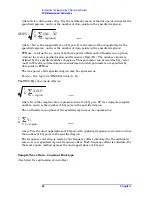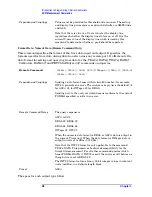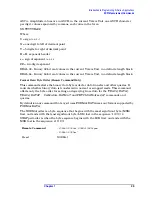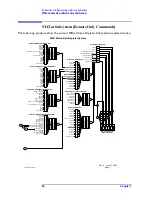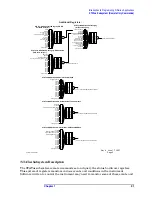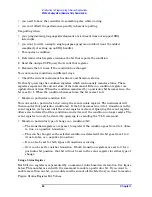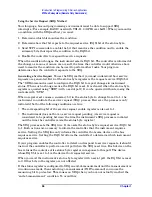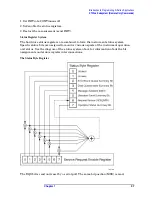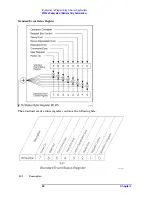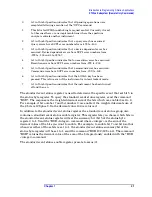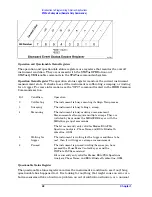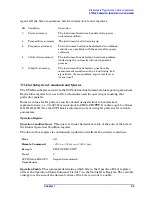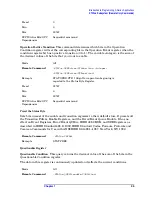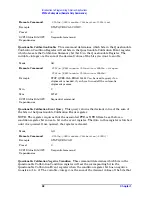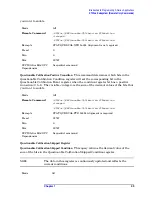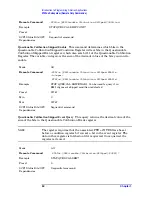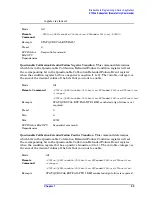
38
Chapter 1
Introduction to Programming X-Series Applications
STATus Subsystem (Remote Only Commands)
non-destructively by the *STB? command. If you serial poll bit 6 it is read as RQS, but if
you send *STB it reads bit 6 as MSS. For more information refer to IEEE 488.2 standards,
section 11.
To query the status byte register, send the command *STB? The response is the weighted
decimal sum of the bits that are set to 1. For example, if bit number 7 and bit number 3 are
set to 1, the weighted decimal sum of the 2 bits is 128 plus 8. So the decimal value 136 is
returned. The *STB command does not clear the status register.
In addition to the status byte register, the status byte group also contains the service
Bit
Description
0, 1
These bits are always set to 0.
2
A 1 in this bit position indicates that the SCPI error queue is not empty
which means that it contains at least one error message.
3
A 1 in this bit position indicates that the data questionable summary bit
has been set. The data questionable event register can then be read to
determine the specific condition that caused this bit to be set.
4
A 1 in this bit position indicates that the instrument has data ready in the
output queue. There are no lower status groups that provide input to this
bit.
5
A 1 in this bit position indicates that the standard event summary bit has
been set. The standard event status register can then be read to determine
the specific event that caused this bit to be set.
6
A 1 in this bit position indicates that the instrument has at least one reason
to report a status change. This bit is also called the master summary status
bit (MSS).
7
A 1 in this bit position indicates that the standard operation summary bit
has been set. The standard operation event register can then be read to
determine the specific condition that caused this bit to be set.

